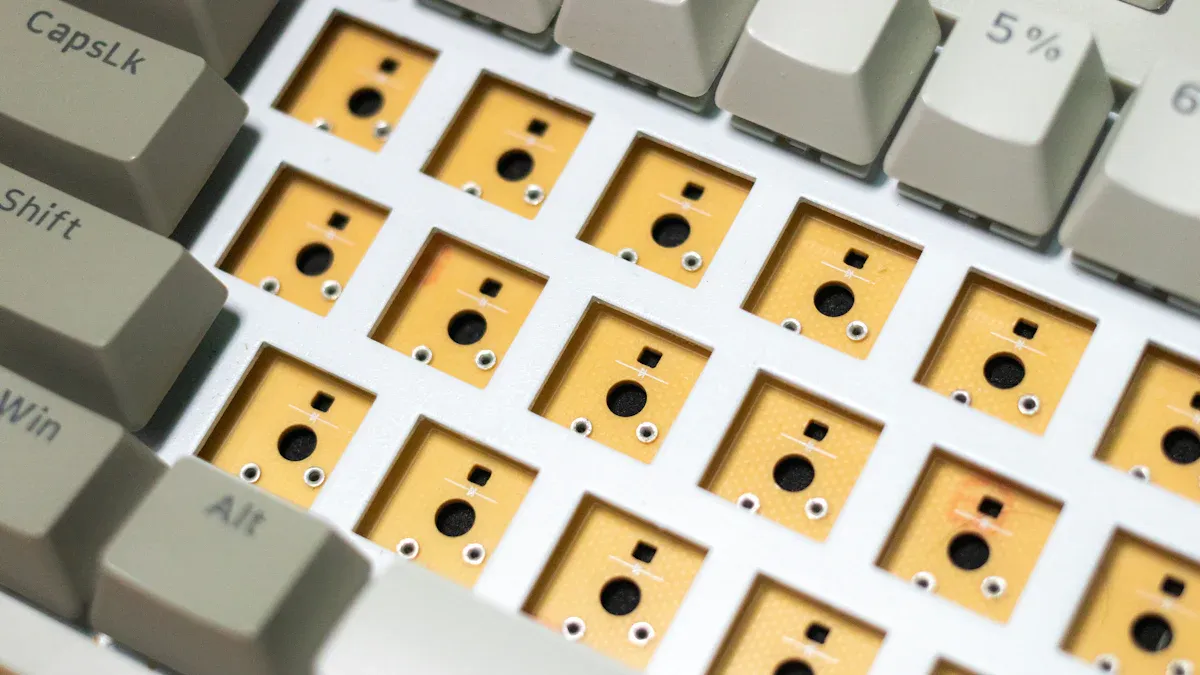
You depend on your phone every day. Mechanical switches used to cause problems like sticking or wearing out quickly. A Magnetic Telephone Hook Switch gives you better performance and longer life. This upgrade makes your phone more reliable and easier to use, so you experience fewer interruptions.
Key Takeaways
- Magnetic hook switches use magnets and sensors instead of moving parts, making phones quieter and more reliable.
- These switches last longer because they avoid wear and keep out dust, reducing phone repairs and failures.
- The switch to magnetic technology helped phone makers create sleeker, more dependable phones that work better every day.
Mechanical vs. Magnetic Telephone Hook Switch

How Mechanical Hook Switches Worked
You may have seen old phones with a button or lever under the handset. This part is the mechanical hook switch. When you lift the handset, the button pops up and connects the call. When you put the handset back, the button goes down and ends the call. Springs and metal contacts inside the phone make this work. The movement of the handset controls the switch.
Problems with Mechanical Switches
Mechanical hook switches often cause trouble. Over time, the moving parts wear out. Dust and dirt can get inside and make the switch stick. Sometimes, the contacts do not touch well, so your phone may not connect or disconnect calls properly. You might hear a loud click every time you pick up or hang up the handset. These problems make phones less reliable and harder to use.
Note: Many people had to replace their phones or fix the switches often because of these issues.
What Is a Magnetic Telephone Hook Switch
A Magnetic Telephone Hook Switch uses magnets and sensors instead of moving metal parts. When you lift the handset, a magnet moves near a sensor. The sensor detects the magnet and tells the phone to connect the call. When you hang up, the magnet moves away, and the sensor ends the call. This design has fewer parts that can break. You get a quieter, smoother experience. Many modern phones use a Magnetic Telephone Hook Switch for better reliability and longer life.
How Magnetic Telephone Hook Switches Work

The Role of Magnets and Reed Sensors
You might wonder how a Magnetic Telephone Hook Switch works without moving metal parts. The answer lies in magnets and reed sensors. A small magnet sits inside the phone, usually near the handset cradle. Next to it, you find a reed sensor. This sensor is a tiny glass tube with two thin metal strips inside. When the magnet comes close, the strips touch and complete an electrical circuit.
Tip: Reed sensors react only to magnets, so dust or dirt does not affect them like old mechanical parts.
You get a fast and reliable response every time you pick up or hang up the handset. The magnet never wears out, and the reed sensor stays sealed from the outside world.
How the Switch Detects Handset Position
You control the Magnetic Telephone Hook Switch by moving the handset. When you lift the handset, the magnet moves away from the reed sensor. The sensor opens the circuit, and your phone knows you want to make a call. When you put the handset back, the magnet moves close to the sensor again. The sensor closes the circuit, and your phone ends the call.
Here is a simple table to show what happens:
| Handset Position | Magnet Location | Reed Sensor State | Phone Action |
|---|---|---|---|
| On the cradle | Near the sensor | Closed | Call ends |
| Off the cradle | Away from the sensor | Open | Call connects |
You do not need to press any buttons or worry about stuck parts. The switch works every time you use your phone.
Key Benefits Over Mechanical Designs
You gain several advantages when you use a Magnetic Telephone Hook Switch:
- Longer lifespan: Magnets and reed sensors do not wear out like springs or metal contacts.
- Quieter operation: You hear no loud clicks when you pick up or hang up the handset.
- Better reliability: The sealed sensor keeps out dust and dirt, so the switch works in all conditions.
- Smooth experience: You feel less resistance and enjoy a more modern phone design.
Note: Many phone makers switched to Magnetic Telephone Hook Switches to give you a better, more dependable phone.
You can trust your phone to work every time, thanks to this simple but smart technology.
The Shift to Magnetic Telephone Hook Switches
Why the Industry Switched
You may wonder why phone makers moved away from mechanical switches. The main reason is reliability. Mechanical switches often failed because of dust, dirt, or worn-out parts. You would need to repair or replace your phone more often. With a Magnetic Telephone Hook Switch, you get a design that lasts longer and works better. Manufacturers also wanted to reduce noise and make phones easier to use. You benefit from fewer problems and a smoother experience.
Tip: Companies always look for ways to improve products and lower repair costs. Magnetic switches helped them reach these goals.
Timeline of the Transition
The switch to magnetic designs did not happen overnight. In the late 1970s, some phone models started using magnetic sensors. By the 1980s, most new phones included this technology. You could find Magnetic Telephone Hook Switches in both home and office phones. Over time, almost every phone maker adopted this change. Today, you rarely see a mechanical hook switch in modern phones.
Here is a simple timeline:
- Late 1970s: First magnetic switches appear in phones.
- 1980s: Most new phones use magnetic sensors.
- 1990s and beyond: Magnetic switches become the standard.
Impact on Phone Design and Reliability
You notice the difference in how phones look and feel. Magnetic switches allow for sleeker designs because they need fewer moving parts. Phones become lighter and more compact. You also enjoy quieter operation and fewer breakdowns. The sealed sensor keeps out dust, so your phone works in more places. This change makes phones more dependable for everyone.
You now see why phones use magnetic hook switches. These switches last longer and work more quietly than old mechanical ones. You get a phone that is easier to use and more reliable every day.
Remember: This upgrade keeps your phone dependable in today’s world.
FAQ
What makes a magnetic hook switch more reliable than a mechanical one?
You get fewer breakdowns because magnets and sensors do not wear out. Dust and dirt cannot get inside the sealed sensor.
Tip: Magnetic switches last much longer than mechanical ones.
Can you replace a mechanical hook switch with a magnetic one?
You usually cannot swap them directly. Magnetic switches need special sensors and wiring. You may need a new phone designed for magnetic switches.
Do magnetic hook switches use electricity all the time?
You use electricity only when you pick up or hang up the handset. The sensor works with very little power, so it saves energy.


